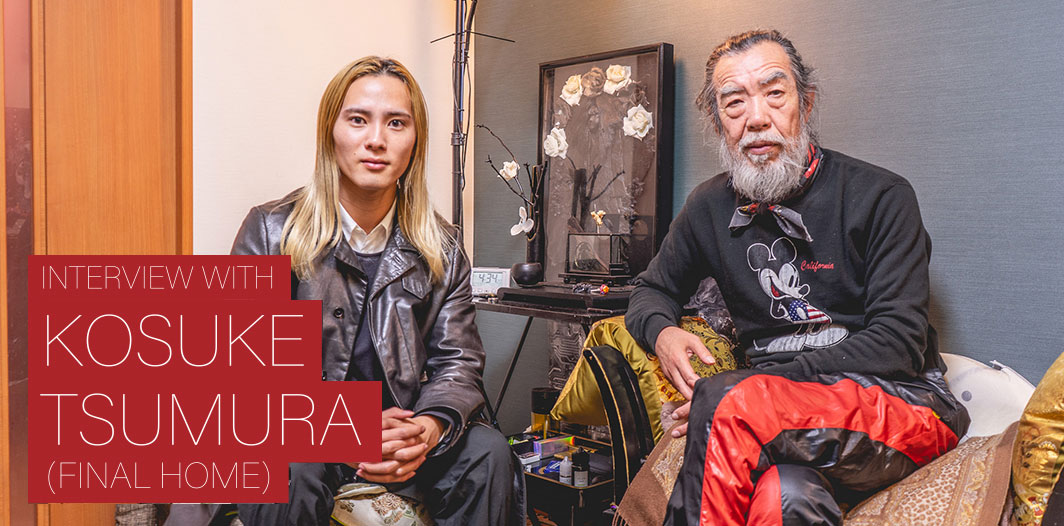CETTENが津村耕佑と出会った事によって始まったプロジェクト。
「世代間の対話」を大枠のテーマとして掲げる事で世代間の混在した価値観が融合し、
新たな価値創出をする。その過程において、「循環」を非常に重要視したプロジェクトである。
名前の由来はジャンクアートのパイオニアであり、ダダに精通する「Kurt Schwitters」の作品の数々より影響を受けて「MerZ」と名付けた。
This is a project that started since CETTEN met Kosuke Tsumura.
The project aims to create new values by fusing the mixed values of different generations, under the overarching
theme of “intergenerational dialogue”. The project also places a great emphasis on “circulation” in the process.
The name of the project, “MerZ”, was inspired by the works of Kurt Schwitters, a pioneer of junk art and a master of Dada.

「MerZ」はSchwittersの精神を受け継ぎ、社会に存在する「循環」を実験的に表現するプロジェクトである。
MerZでは循環とは物質的なものだけでなく、各個人の心やアートに関わるものであると考える。
“MerZ” is a project that expresses the “circulation” that exists in society experimentally, inheriting the spirit of Schwitters.
MerZ considers that the circulation is not only as a material thing, but also as something that relates to each individual’s mind and art.

CETTENは兼ねてよりゴミ拾いや古着を販売する事による「循環」に対して向き合い続けてきた。
服やゴミは循環対象であるが、アートは循環対象であるのか。アートに内包されるものはなんなのか。また人間の心は循環しないのか。
様々なデザイナー達の作品を身に纏い、街中に潜み、ゴミ拾いを行うCETTEN。
CETTEN has been continuously confronting the “circulation” of picking up trash and selling old clothes.Clothes and trash are objects of circulation, but is art an object of circulation? What defines something as art? And does the human mind not circulate?
CETTEN wears the works of various designers, lurks in the city, and picks up trash.

ゴミ拾いとは単なるゴミを拾う活動による環境的循環だけでなく、実は活動を行う事による自分の心の循環、いわば瞑想を繰り返している事が最大の特徴である。また循環により心の空いたスペースに新たな価値観を埋めることができる。また、直接的にも街をクリーンにする事で人々との交流やコミュニケーションを創出する空間の循環を成している。
Picking up trash not only circulates the environment, but also circulates your own mind, serving as a kind of meditation, which is the biggest element of the activity. Also, by circulating, one can fill the empty space in one’s mind with new values. In addition, by directly cleaning the city, one creates a space for interaction and communication with people.



これはFINALHOMEのデザイナー「津村耕佑」氏の服の循環やスペース理論に基づいた概念を踏襲する考え方である。 また、MerZのコンセプトはハイレッドセンターが1960年代に行った首都圏清掃整理促進運動と表し、街中での清掃活動を前衛芸術として表現したパフォーマンスにインスパイアされており、現代の前衛芸術として紐づけている。
This is a way of thinking that follows the concept of clothing circulation and space theory by Kosuke Tsumura, the designer of FINALHOME. Also, the concept of MerZ is inspired by the Metropolitan Area Cleaning and Sorting Promotion Movement, a performance that expressed the cleaning activity in the city as avant-garde art, carried out by High Red Center in the 1960s, and linked it to contemporary avant-garde art.

また、MerZはネオダダや現代アート、津村耕佑に大きく影響を受けながら、循環というテーマを多角的に展開していく。 超現代のダダは、ダダの凶暴性を直接的でなく、より内面的に備えた非常に時代に合った行動の現れなのではないだろうか。 Collabolation Item Coming soon…
Derived from the junk art of neodada, the junk art expressed by the generation of ultra-modern art may be an installation using the city, or an art that appeals to the circulation of the mind associated with imi consumption. Moreover, MerZ develops the theme of circulation in a multifaceted way, while being influenced by neodada, contemporary art, and Kosuke Tsumura. The ultra-modern dada may be a manifestation of actions that are suited to the times, with a more internal rather than direct violence of dada. Collabolation Item Coming soon…









